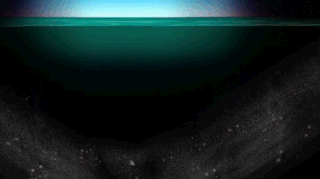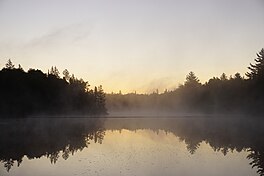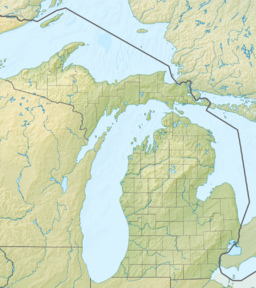
Limnology is the study of inland aquatic ecosystems. The study of limnology includes aspects of the biological, chemical, physical, and geological characteristics of fresh and saline, natural and man-made bodies of water. This includes the study of lakes, reservoirs, ponds, rivers, springs, streams, wetlands, and groundwater. Water systems are often categorized as either running (lotic) or standing (lentic).

The biological pump (or ocean carbon biological pump or marine biological carbon pump) is the ocean's biologically driven sequestration of carbon from the atmosphere and land runoff to the ocean interior and seafloor sediments. In other words, it is a biologically mediated process which results in the sequestering of carbon in the deep ocean away from the atmosphere and the land. The biological pump is the biological component of the "marine carbon pump" which contains both a physical and biological component. It is the part of the broader oceanic carbon cycle responsible for the cycling of organic matter formed mainly by phytoplankton during photosynthesis (soft-tissue pump), as well as the cycling of calcium carbonate (CaCO3) formed into shells by certain organisms such as plankton and mollusks (carbonate pump).
The bathypelagic zone or bathyal zone is the part of the open ocean that extends from a depth of 1,000 to 4,000 m below the ocean surface. It lies between the mesopelagic above and the abyssopelagic below. The bathypelagic is also known as the midnight zone because of the lack of sunlight; this feature does not allow for photosynthesis-driven primary production, preventing growth of phytoplankton or aquatic plants. Although larger by volume than the photic zone, human knowledge of the bathypelagic zone remains limited by ability to explore the deep ocean.

Diel vertical migration (DVM), also known as diurnal vertical migration, is a pattern of movement used by some organisms, such as copepods, living in the ocean and in lakes. The word "diel" comes from Latin: diēs, lit. 'day', and means a 24-hour period. The migration occurs when organisms move up to the uppermost layer of the sea at night and return to the bottom of the daylight zone of the oceans or to the dense, bottom layer of lakes during the day. It is important to the functioning of deep-sea food webs and the biologically driven sequestration of carbon.

Colored dissolved organic matter (CDOM) is the optically measurable component of dissolved organic matter in water. Also known as chromophoric dissolved organic matter, yellow substance, and gelbstoff, CDOM occurs naturally in aquatic environments and is a complex mixture of many hundreds to thousands of individual, unique organic matter molecules, which are primarily leached from decaying detritus and organic matter. CDOM most strongly absorbs short wavelength light ranging from blue to ultraviolet, whereas pure water absorbs longer wavelength red light. Therefore, water with little or no CDOM, such as the open ocean, appears blue. Waters containing high amounts of CDOM can range from brown, as in many rivers, to yellow and yellow-brown in coastal waters. In general, CDOM concentrations are much higher in fresh waters and estuaries than in the open ocean, though concentrations are highly variable, as is the estimated contribution of CDOM to the total dissolved organic matter pool.
The G. Evelyn Hutchinson Award is an award granted annually by the Association for the Sciences of Limnology and Oceanography to a mid-career scientist for work accomplished during the preceding 5–10 years for excellence in any aspect of limnology or oceanography. The award is named in honor of the ecologist and limnologist G. Evelyn Hutchinson. Hutchinson requested that recipients of the award have made considerable contributions to knowledge, and that their future work promise a continuing legacy of scientific excellence.

Bacterioplankton refers to the bacterial component of the plankton that drifts in the water column. The name comes from the Ancient Greek word πλανκτος, meaning "wanderer" or "drifter", and bacterium, a Latin term coined in the 19th century by Christian Gottfried Ehrenberg. They are found in both seawater and freshwater.

Particulate organic matter (POM) is a fraction of total organic matter operationally defined as that which does not pass through a filter pore size that typically ranges in size from 0.053 millimeters (53 μm) to 2 millimeters.
Limnology and Oceanography (L&O) is a bimonthly peer-reviewed scientific journal focused on all aspects of limnology and oceanography. It was established in 1956 and originally published through the Association for the Sciences of Limnology and Oceanography (ASLO), and now published in partnership with John Wiley and Sons. Occasionally, L&O publishes special issues focused on a specific topic in aquatic systems in addition to the six regular issues published each year.

Lake metabolism represents a lake's balance between carbon fixation and biological carbon oxidation. Whole-lake metabolism includes the carbon fixation and oxidation from all organism within the lake, from bacteria to fishes, and is typically estimated by measuring changes in dissolved oxygen or carbon dioxide throughout the day.

Net ecosystem production (NEP) in ecology, limnology, and oceanography, is the difference between gross primary production (GPP) and net ecosystem respiration. Net ecosystem production represents all the carbon produced by plants in water through photosynthesis that does not get respired by animals, other heterotrophs, or the plants themselves.
Amina Pollard is an American limnologist and ecologist at the U.S. Environmental Protection Agency (EPA).
Cindy Lee is a retired Distinguished Professor known for her research characterizing the compounds that comprise marine organic matter.

Particulate inorganic carbon (PIC) can be contrasted with dissolved inorganic carbon (DIC), the other form of inorganic carbon found in the ocean. These distinctions are important in chemical oceanography. Particulate inorganic carbon is sometimes called suspended inorganic carbon. In operational terms, it is defined as the inorganic carbon in particulate form that is too large to pass through the filter used to separate dissolved inorganic carbon.
Mary Jane Perry is an American oceanographer known for the use of optics to study marine phytoplankton.

Lake Lacawac is located at the very middle of Lacawac's Sanctuary Field Station in Pennsylvania and has been deemed the "southernmost unpolluted glacial lake in North America." Lake Lacawac has proven to be invaluable to researchers and students to conduct field experiments in order to learn more about the limnology of the lake.
Patricia Marguerite Glibert is marine scientist known for her research on nutrient use by phytoplankton and harmful algal blooms in Chesapeake Bay. She is an elected fellow of the American Association for the Advancement of Science.
Margaret Ruth Mulholland is professor at Old Dominion University known for her work on nutrients in marine and estuarine environments.
Elizabeth A. Canuel is a chemical oceanographer known for her work on organic carbon cycling in aquatic environments. She is the Chancellor Professor of Marine Science at the College of William & Mary and is an elected fellow of the Geochemical Society and the European Association of Geochemistry.
Susanne Menden-Deuer is an oceanographer and marine scientist known for her work on marine food webs, including their structure and function. As of 2022, she is president-elect of the Association for the Sciences of Limnology and Oceanography.












